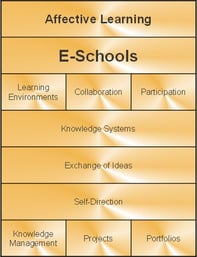Published on
Prior Learning Assessment: 2010, 2020, 2030

Prior learning assessment has a past, present, and future: 2010, 2020, 2030. People have always learned from multiple sources—school, work, military, travel, self-study, and community and volunteer service. And long before learning was packaged into credentials awarded primarily by schools (K-12, colleges and universities, and specialty institutions), there were many ways of assessing, verifying, and even licensing that learning. Historically, that occurred for many skilled workers through guilds: Groups of workers set and maintained standards, and new entrants apprenticed to learn various crafts. The fields of knowledge were insular: master weavers taught apprentices how to weave, master carpenters trained their charges in that craft, and so forth.
As educational systems evolved into more structured, complex organizations, they became somewhat insular as well—not so much within specific areas of knowledge but as institutions. Though an institution might offer learning opportunities in many fields, it would limit students’ opportunities to demonstrate any learning acquired outside the academy. Individuals were required to move through the academy mostly in lockstep, even if that meant they were sitting in classes for which they had already mastered the learning competencies through other means.
I witnessed firsthand what this meant for individuals when I began my professional career. As an advisor at the University Without Walls-University of Minnesota, I worked with 30 students who had acquired learning from outside sources and wanted to acquire new learning needed to earn a bachelor’s degree. I helped them document that learning and determine what additional resources would help them complete the degree. The completed portfolio (PLA and coursework) was presented to a faculty committee, which decided whether the student met the requirements. I also served as an assessment specialist at Metropolitan State University in St. Paul, then a new upper-division university designed, in part, to recognize PLA for individuals who had acquired learning elsewhere. A chief concern of our assessment team was recency: if a student presented learning acquired decades earlier—which some did—did that learning still count for college credit without a current assessment?
Many lessons learned from PLA in the 1970s have stayed with me through decades of work in postsecondary education. I hoped our systems would evolve to enable learners to have their prior learning recognized at all colleges and universities, but that has not happened. Many adult students are still required to repeat (and pay for) courses they’ve already mastered. Paths to degree completion have been slowed, no doubt causing many students to give up and drop out.
In 2010, the Council for Adult and Experiential Learning (CAEL) conducted ground-breaking research to answer questions such as what data exists about PLA? How many institutions offered it? How many students participated and were earning academic credit—and did earning PLA credit help students complete degrees?
Its report, Fueling the Race to Postsecondary Success, garnered significant attention. The study showed that students with PLA credit were two and a half times more likely to complete postsecondary degrees. The report also raised awareness of PLA, and we witnessed a growing commitment to PLA on many fronts—from colleges and universities, foundations, policymakers, and government agencies. CAEL heard from many institutions that the findings from Fueling the Race were influential in advancing PLA with faculty and administrators. CAEL saw record attendance at its trainings and conferences, with many first-time attendees interested in learning more about PLA. Numerous states developed systemwide PLA policies (e.g., Tennessee, Ohio, Oregon, Washington, Utah, Idaho, Pennsylvania, Texas through the A&M system, Montana, and Colorado). Many states cited those findings as an important reason for the state to encourage more institutions to offer PLA. One state (Indiana) passed legislation to ensure that state financial aid would cover PLA-related assessments.
On the federal level, the U.S. Department of Labor required grantees in its $1.9 billion TAACCCT program (Trade Adjustment Assistance Community College and Career Training) to increase community colleges’ ability to include PLA in initiatives to address the challenges of the workforce; and the U.S. Department of Education established an experimental site to test ways of using Title IV funding for PLA.
In short, the decade paid welcome attention to adult learners and PLA.
Recently, Lumina Foundation and Strada Education Network joined forces to support new research to ask what happened to PLA ten years after the baseline research? The Western Interstate Commission for Higher Education (WICHE) and CAEL partnered to update the original study and assess the PLA landscape by commissioning a series of briefs on key aspects.
On the whole, the results from the 2020 study of PLA strongly reinforce the main takeaway from ten years ago: PLA boosts credential completion rates for adult students. This positive effect is still evident for all student subgroups, regardless of race, ethnicity, income level, institutional sector, and many other categories.
This is good news, and frankly, not surprising because we have always sensed that PLA makes a difference though we lacked good data to prove it.
But there are also many cautions in the news. For example, PLA take-up rates in the new study’s sample were far lower, with only 11% of adult students earning credit, compared to 25% of such students in the 2010 sample. Though there are several possible reasons for this change, which are described in the report and the series of briefs, we’re worried. Other studies have found that pick-up rates for PLA are low. The Southern Association of Colleges and Schools Commission on Colleges (SACSCOC) found, for example, that only 4% of students at the responding institutions earned PLA credit. WICHE, CAEL, and Lumina Foundation recently sponsored a convening to review the new data and present student experiences with PLA. There is a groundswell of agreement: we should be doing better — much better — after a decade of attention.
And that brings us to the future. The 2010 and 2020 studies reveal that even when PLA usage is low, the effect on adult student completion can still be substantial. Knowing that PLA can significantly increase credential completion, what is our responsibility?
A national call to renew—and intensify—PLA is needed. This new research comes in the midst of a pandemic-caused recession, bringing the unheralded opportunity to build better learning and workforce systems—and we must.
We cannot afford to watch another decade pass while this warning message flashes before us: PLA works, but there aren’t that many people who benefit from it. Let’s take the lessons learned from this new research and commit to helping students move expeditiously toward credential completion with their prior learning assessed and verified using the growing number of assessment tools available. Let’s expand PLA services at every college and university in the nation, and raise our take-up rate for students substantially. Why not a 60-70% take-up rate? If 100% of every student entering postsecondary education received advising at in-take, which includes PLA advising, this would be a major next step.
There is a past and present with PLA. We have the opportunity to build a better future, starting now. 2030 is waiting, impatiently.
Disclaimer: Embedded links in articles don’t represent author endorsement, but aim to provide readers with additional context and service.
Author Perspective: Educator



